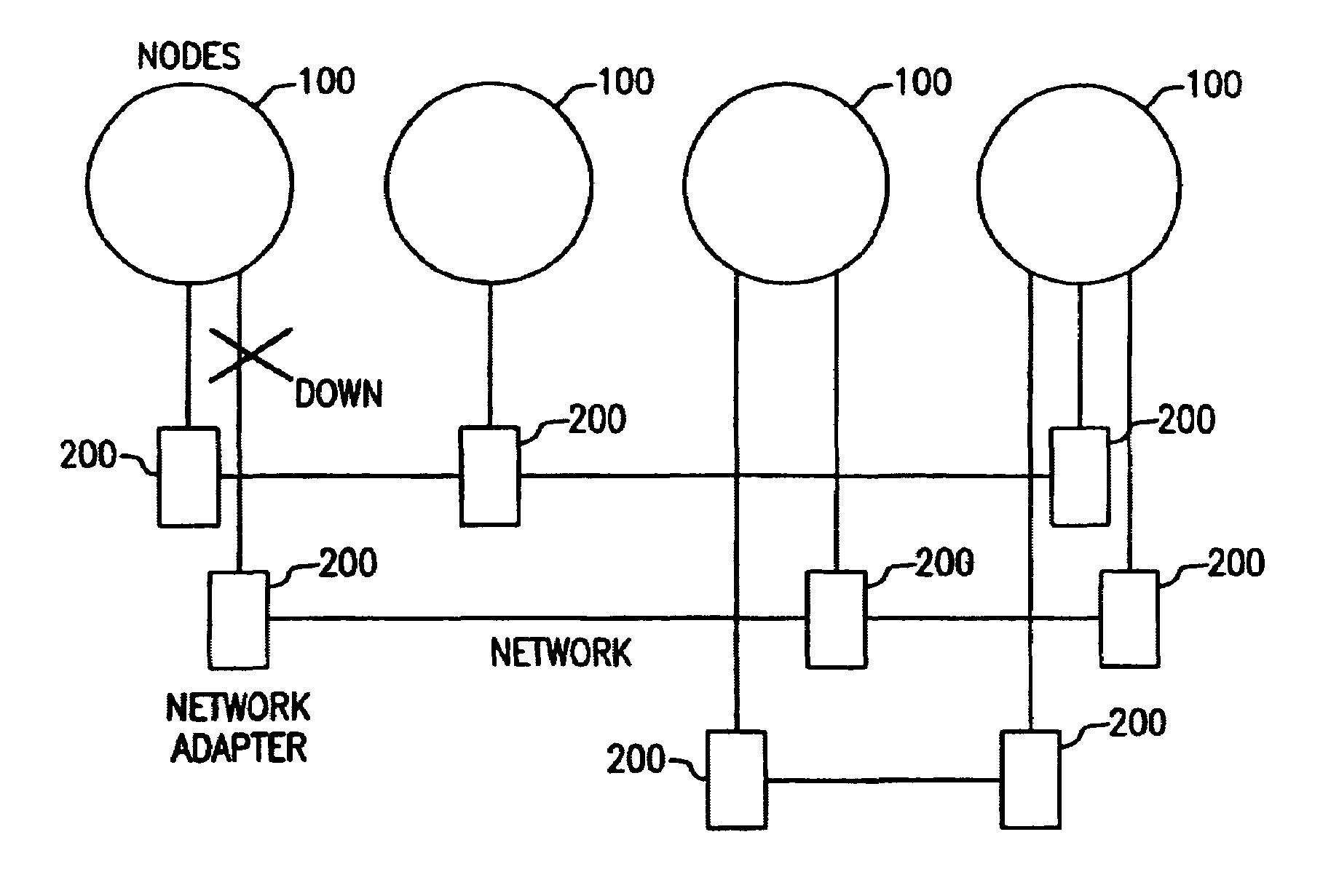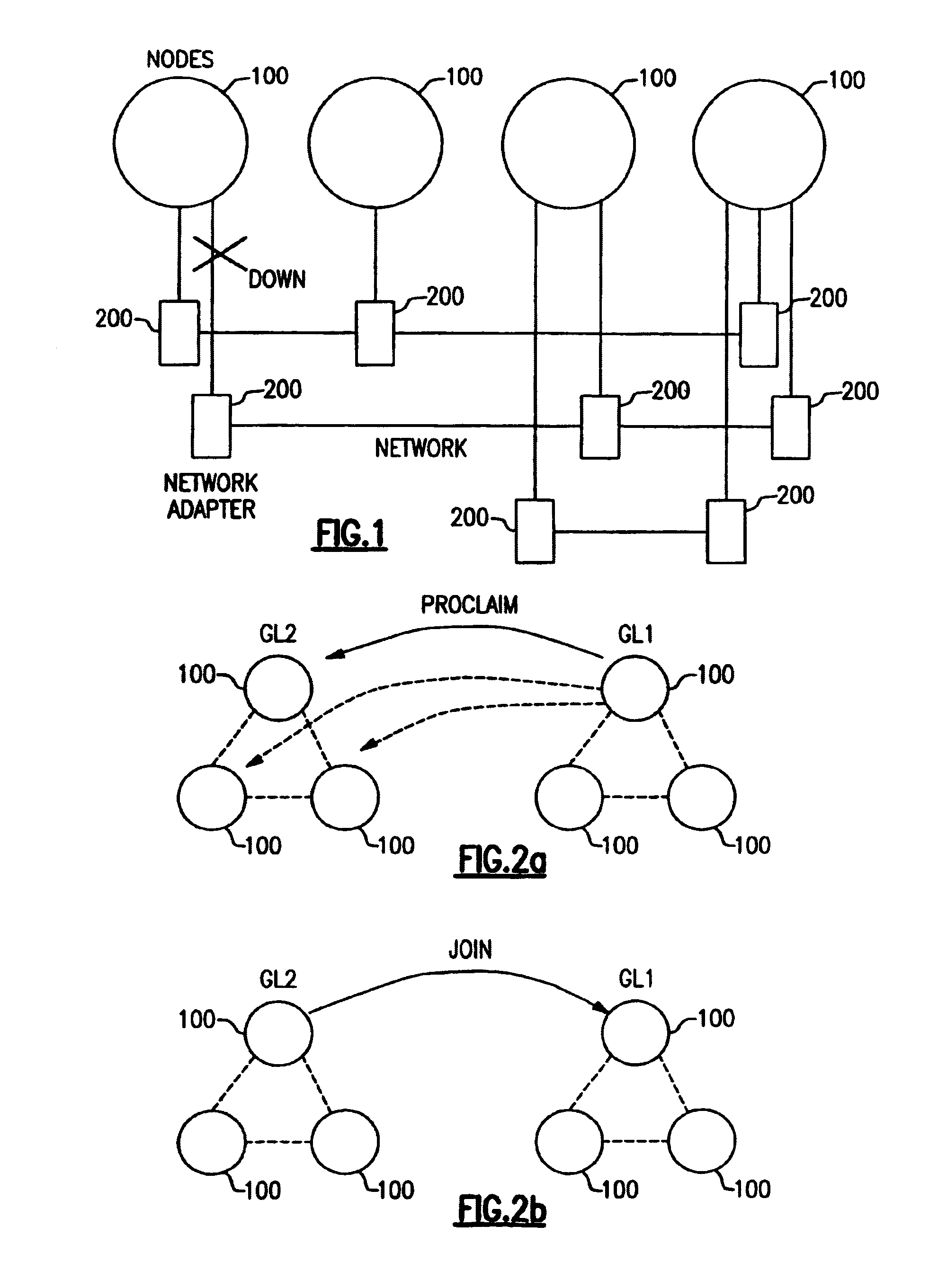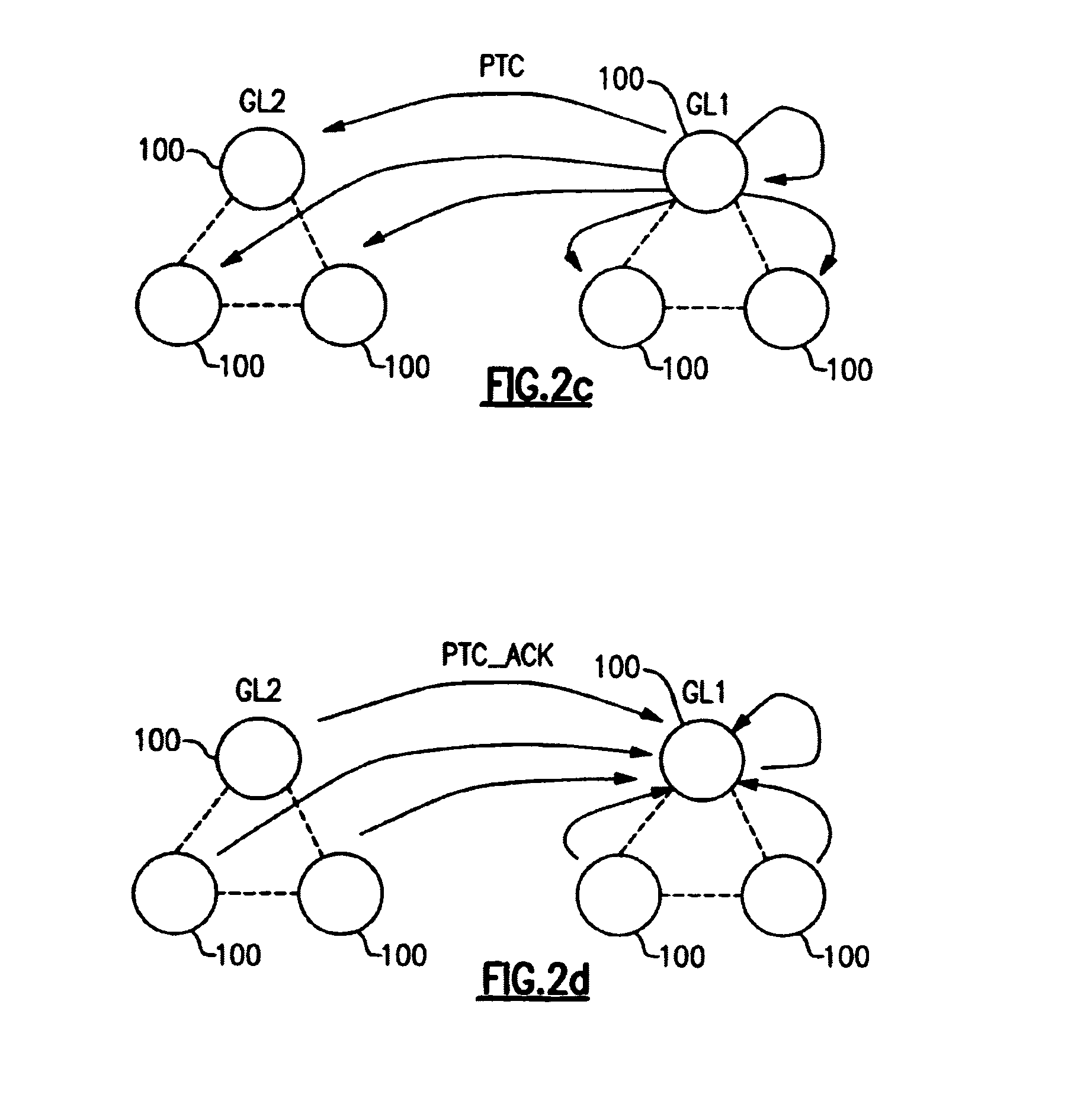Method for controlling group membership in a distributed multinode data processing system to assure mutually symmetric liveness status indications
- Summary
- Abstract
- Description
- Claims
- Application Information
AI Technical Summary
Benefits of technology
Problems solved by technology
Method used
Image
Examples
example 1 (
IN 3.2)
[0121]In this example, the sender of the “PTC” message has G2 (Group 2) indicated as the last_stable_group. Since the destination (“Node 1”) does not belong to G2, the “in_previous_stable_group” indication in the “PTC” message is set to “FALSE.” Upon receiving the message, Node 1 first sees the value of in_previous_stable_group: FALSE. It then examines whether the sender belongs to last_stable group. For Node 1, last_stable_group is G1 (Group 1), and the sender does belong to it (when Node 1 dissolves the group, it forms a singleton group, but it is an unstable one.) Node 1 therefore sees that the two pieces of information are inconsistent. Therefore, Node 1 rejects the message. Node 1 keeps rejecting the “PTC” message until the stability timer expires (typically after about 10 seconds) and Node 1 becomes stable. At this point, Node 1 produces a new last_stable_group indication which does not contain the sender of the “PTC.” Consequently, the next “PTC” is accepted, since the...
example 2
[0122]In this example, Node 1 has G1 (Group 1) designated as the last_stable_group. The other nodes all have G2 (Group 2) designated as the last_stable_group. All of the “PTC” messages have TRUE as an indicator for being “in_previous_stable_group,” since all of the recipients belonged to G1. On the other hand, the sender of “PTC” (Node 1) does not belong to G2 (the recipients' last_stable_group), so again there is an inconsistency, and the “PTC” is rejected. The same thing happens again until Node 1 forms a singleton stable group.
Group Merge
[0123]Suppose AMG Group 1 (G1) has nodes 1 and 2, while Group 2 (G2) has Nodes 3 and 4. Node 2, which is assumed to be G1's Group Leader sends a “JOIN” message to Node 4, which is G2's Group Leader. Node 4 then sends a “PTC” message to Nodes 1, 2, and 3. For Node 1, the in_previous_stable_group indicator is “FALSE,” since Node 1 does not belong to G2. Node 1 itself has Node 4 as not part of the “last_stable_group” (G1). The same is true for Node ...
PUM
 Login to View More
Login to View More Abstract
Description
Claims
Application Information
 Login to View More
Login to View More - R&D
- Intellectual Property
- Life Sciences
- Materials
- Tech Scout
- Unparalleled Data Quality
- Higher Quality Content
- 60% Fewer Hallucinations
Browse by: Latest US Patents, China's latest patents, Technical Efficacy Thesaurus, Application Domain, Technology Topic, Popular Technical Reports.
© 2025 PatSnap. All rights reserved.Legal|Privacy policy|Modern Slavery Act Transparency Statement|Sitemap|About US| Contact US: help@patsnap.com



